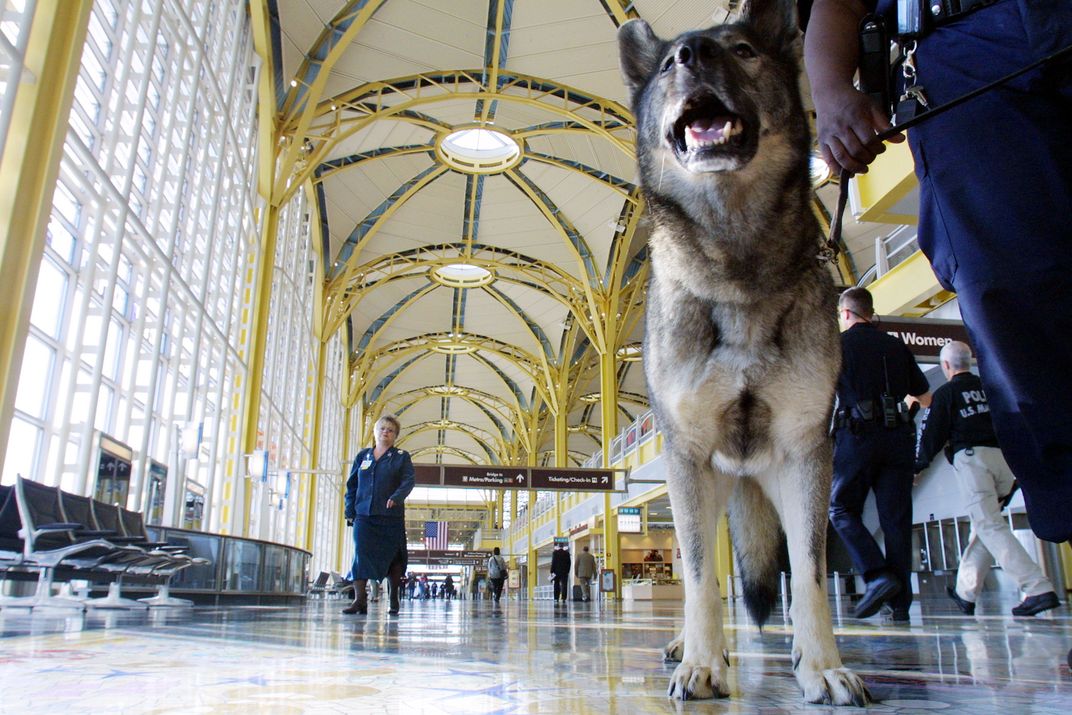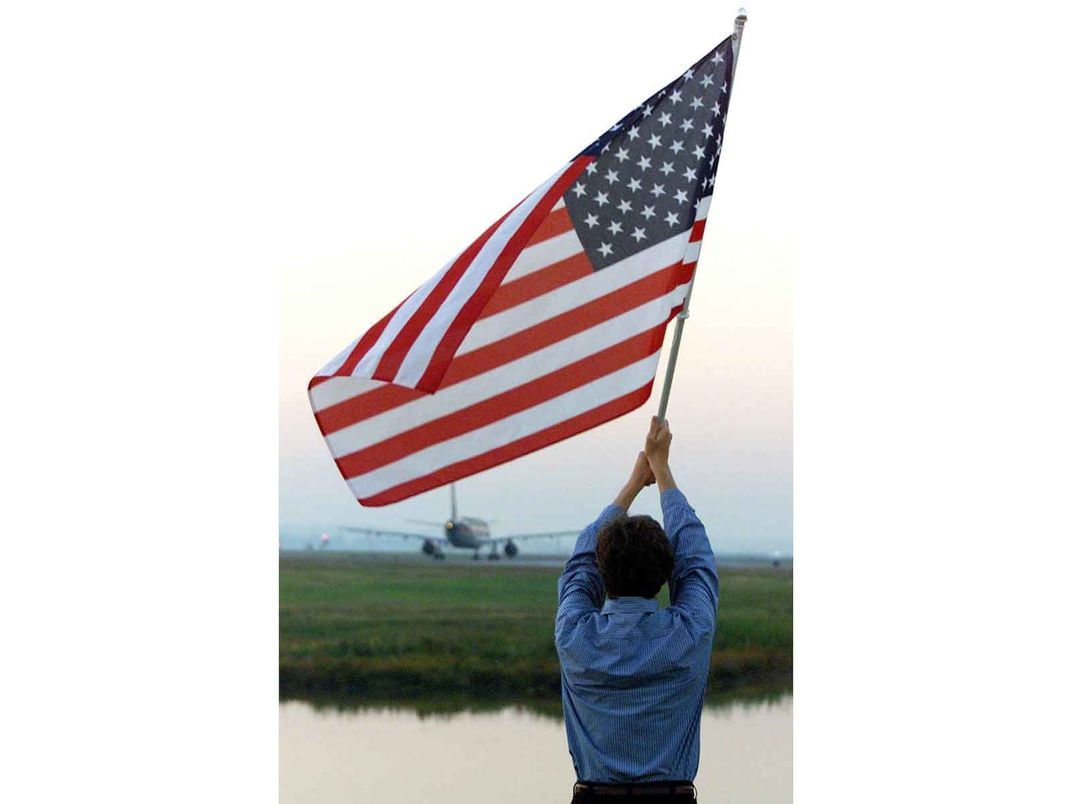Smithsonian’s Chris Browne Was the Manager at Ronald Reagan National Airport on 9/11
The acting director of the National Air and Space Museum reflects 20 years later on the rapid grounding of air traffic across the US
:focal(684x718:685x719)/https://tf-cmsv2-smithsonianmag-media.s3.amazonaws.com/blogging/featured/GettyImages-1161208.jpg)
September 11, 2001, started out as a beautiful morning for most of the East Coast, but the clear skies soon meant that determined terrorists were able to easily navigate their way into the sides of iconic buildings in New York and Washington, DC. By day’s end the nation’s persona had been irreversibly changed, moving towards a more fearful and uncertain place.
Most of us can remember where we were when we heard that Flight 11 flew into the side of North Tower of the World Trade Center in New York. People on the East Coast were just arriving at work, early risers on the West Coast were just starting their day, parents were dropping their kids off at school. In the minutes following the first attack, confusion reigned.
Since the weather in New York was just as clear and sunny as it was in DC, I thought that the airliner’s collision with a skyscraper in the heart of New York City could not have been anything other than intentional.
In the immediate aftermath of the attacks, I had a job to do, so I did not have time to process what was happening on an emotional level. In my capacity as the Airport Manager at Ronald Reagan Washington National Airport (DCA) on that fateful day, my more immediate efforts focused on protecting travelers, planes, and structures from further harm and damage. After Flight 77 crashed into the Pentagon, just three miles from Reagan National, embers falling onto the airport from the smoke plume rising above the Pentagon served as an ever-present reminder that the risk was very real.
As the FAA made decisions about how to respond to these attacks, my team reacted as best we could for our employees and customers. At 9:06 am, FAA issued a ground stop to all traffic not yet departed that would encounter New York airspace and a little under 40 minutes later, the FAA Command Center decided to close all US airspace. Within a few hours, all commercial air traffic was grounded.
This animation, created by NASA using FAA air traffic control data from September 11, 2001, shows the rapid grounding of air traffic across the US, and redirection of incoming international traffic, and is an important visual for telling the story of this unprecedented day in our America by Air gallery.
As morning turned to afternoon, the airport team adjusted its focus to securing the facility. In the haste of evacuation, rental cars had been left idling at the curb, pizzas were still cooking, and unclaimed baggage continued in endless loop on the return carousels. The airport took on the appearance of a sci-fi movie set with everything appearing in place save for the absence of people.
While the nation’s airspace remained closed for several days after, the disappearance of contrails and aircraft noise left us yearning for that time when we could reopen and resume the flow of the country’s airborne lifeblood. That time soon came for every airport except DCA, which remained shuttered due to its proximity and perceived risk to the national nerve center. With such open-ended uncertainty, we had to begin installing locks on doors not so equipped. As a 24/7 public facility with large occupancy loads, building codes stipulated that Reagan National never have the capability to lock its curbside entrances. With an ironic twist, the doors that had just served as timely exit points for fleeing travelers, now needed fortified locks. After all, the public had left our premises with no expectation of return, and the place had to be secured in new and unforeseen ways. It was one of the most poignant moments in the days following 9/11 for my team—locking our doors was viewed as a move towards irrelevancy.

Removing those locks thus became a sign of life renewed. After a near month of closure, President Bush concluded that with new and enhanced security measures, DCA could safely reopen. When introduced to him upon his visit to the airport, he graciously stated “Chris, now you can get back to work.” I hadn’t the gumption to offer that I had never been so busy than in the weeks prior, trying to position the airport for its uncertain future.
The locks did indeed come off, the doors opened, and travelers returned to the nations’ capital airport. Like so much of America, Reagan National recovered from the wretchedness spawned by the attacks on 9/11 and figured out how to keep its doors open and accessible to the public.
As I reflect back on 9/11, twenty years after a day when time seemed to both slow down and speed up at once, the emotional toll of these attacks is even more stark. I’ve worked in and around aviation my entire career and began working for the Metropolitan Washington Airports Authority in 1988. It’s still painful to grapple with: that commercial airliners, which I’d devoted my career to safeguarding the departure and arrival of, were turned into weapons; that technology that opened up our world was central to an act of terror that brought our country to a halt; that a craft that can bring so much joy brought about so much destruction.

As September 11, 2001 unfolded, all I could do was focus on what I could control—the safe evacuation of DCA and whatever support we could lend to emergency responders at the Pentagon. But as days, weeks, and months passed, and we returned to the (new) normal of air travel in the twenty-first century, I had room to reflect on the trauma of that day—both on a national scale but also on a personal level as an American, father, aviator, and human being who watched tragedy unfold before his eyes. There wasn’t room for an emotional response for me on that day, but twenty years later many moments still live fresh in my mind, and the emotion is still there.
Today, I join with the staff of the National Air and Space Museum and people around the world in remembering and honoring those who lost their lives on September 11th.
National Air and Space Museum acting director Chris Browne was Airport Manager of Ronald Reagan Washington National Airport on September 11, 2001. Twenty years later, he reflects on his experience on 9/11.


